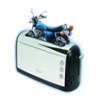GPZ750 Fuel Tank Connection - WITH PICS
- LukeJ
-
Topic Author
- Offline
- User
-

Registered
- Posts: 32
- Thanks: 0
GPZ750 Fuel Tank Connection - WITH PICS
04 Jan 2008 23:01
Hi guys, my 82 GPZ750 is in the projects area and I thought I'd put these questions in another, more appropriate tech thread.
I have connected C and D to the fuel tap. Is this correct?
Where do A and B connect to?
______________________________________________________
Next issue:
When I connected the hoses (guess check and improve), I found the bike turns over, but doesnt start. Then I found a lot of fuel came out of the bottom of the carbs :blink:
I feel that it is best to learn through doing, rather than just give it to a mechanic. I am only asking these questions as I am new to bikes in general and am looking to develop some skills.
Thankyou for your time
Post edited by: LukeJ, at: 2008/01/05 02:02
Post edited by: LukeJ, at: 2008/01/05 17:05
I have connected C and D to the fuel tap. Is this correct?
Where do A and B connect to?
______________________________________________________
Next issue:
When I connected the hoses (guess check and improve), I found the bike turns over, but doesnt start. Then I found a lot of fuel came out of the bottom of the carbs :blink:
I feel that it is best to learn through doing, rather than just give it to a mechanic. I am only asking these questions as I am new to bikes in general and am looking to develop some skills.
Thankyou for your time
Post edited by: LukeJ, at: 2008/01/05 02:02
Post edited by: LukeJ, at: 2008/01/05 17:05
Please Log in or Create an account to join the conversation.
- JMKZHI
-

- Offline
- Platinum Member
-

Registered
- Posts: 2428
- Thanks: 48
Last edit: 03 Dec 2008 20:35 by JMKZHI.
Please Log in or Create an account to join the conversation.
- Biquetoast
-

- Offline
- User
-

Registered
- King Jeremy The Wicked
- Posts: 1193
- Thanks: 7
Re: GPZ750 Fuel Mixup...
05 Jan 2008 09:20
JMKZHI wrote:
He couldn't just say "tank side" and "carb side" because he is questioning lines that may or may not go to the carbs, so he wrote "bike side" instead.
No... I think he means the "sides" of the connections between the tank and the bike in general. Imagine the tank is taken off, and held a few inches away from the bike.LukeJ wrote:What's the fuel tank side?!?....
Fuel Tank Side...
On the bike side, ... :
...
What's the bike side?!?
Most folks refer to the left side of the bike or the right side.
Left & right as yer sittin' on the bike. JMK.
He couldn't just say "tank side" and "carb side" because he is questioning lines that may or may not go to the carbs, so he wrote "bike side" instead.
(1.) '75/'76 KZ400D - Commuter
(2.) '78 KZ750B3 Twin - Commuter
(3.) '78 KZ750B3 Twin - Commuter
(4.) '75 KZ400D - Sold
kz750twins.com
(2.) '78 KZ750B3 Twin - Commuter
(3.) '78 KZ750B3 Twin - Commuter
(4.) '75 KZ400D - Sold
kz750twins.com
Please Log in or Create an account to join the conversation.
- wiredgeorge
-

- Offline
- User
-

Registered
- Posts: 5309
- Thanks: 45
Re: GPZ750 Fuel Mixup...
05 Jan 2008 15:57
Luke, The picture isn't very helpful. I suspect your fuel tank has a vacuum actuated petcock. A larger diameter hose will come off the petcock's main outlet and connect to the fuel inlet in the center of the carb assembly. You can check the petcock by putting it in PRI position and note where the gas comes out.
Hook up the smaller hose to the vacuum fitting on the #3 carb. Each of the carbs has a vacuum fitting located on the top front of the carburetor and made of brass. The fitting is about 1/2" high. This will provide vacuum to the petcock with the engine running and open the diaphragm in the petcock to allow gas to flow. Gas will flow in this manner when the petcock is in the RUN and RES (or ON and RES - not sure from memory).
The gas gauge on your bike is electrical. There is a white, two prong connector that connects to a similar connector hanging off the fuel gauge sending unit under your tank. It is towards the rear and towards the right side of the bike (right as if you are sitting on the bike). You connect the connector from your wiring harness to the similar connector on the tank to get the fuel gauge to work. These gauges; or at least the sending units are not real reliable.
A stock GPz750 will have a vacuum operated emissions system with hoses coming off the vacuum fittings on carbs #1 and #4 and joining at a tee fitting. Another line will connect to a cannister up near your coils that operates your reed valves. The cannister will have larger diameter hoses connected to the reed valves and airbox. If any of the smaller diameter hoses are compromised, the bike will not idle or run correctly. Last, there is a vacuum cap on the remaining, unused vacuum fitting which is on carb #3 (I think... might be #2). You would do well to replace this cap every now and again as they tend to crack and leak. I use vinyl vacuum caps for this reason as they are less leak prone.
See the BS Carb Connections link on our website (see my sig) which is under wg's Tech Stuff Index for pics of how to connect your carbs.
Hook up the smaller hose to the vacuum fitting on the #3 carb. Each of the carbs has a vacuum fitting located on the top front of the carburetor and made of brass. The fitting is about 1/2" high. This will provide vacuum to the petcock with the engine running and open the diaphragm in the petcock to allow gas to flow. Gas will flow in this manner when the petcock is in the RUN and RES (or ON and RES - not sure from memory).
The gas gauge on your bike is electrical. There is a white, two prong connector that connects to a similar connector hanging off the fuel gauge sending unit under your tank. It is towards the rear and towards the right side of the bike (right as if you are sitting on the bike). You connect the connector from your wiring harness to the similar connector on the tank to get the fuel gauge to work. These gauges; or at least the sending units are not real reliable.
A stock GPz750 will have a vacuum operated emissions system with hoses coming off the vacuum fittings on carbs #1 and #4 and joining at a tee fitting. Another line will connect to a cannister up near your coils that operates your reed valves. The cannister will have larger diameter hoses connected to the reed valves and airbox. If any of the smaller diameter hoses are compromised, the bike will not idle or run correctly. Last, there is a vacuum cap on the remaining, unused vacuum fitting which is on carb #3 (I think... might be #2). You would do well to replace this cap every now and again as they tend to crack and leak. I use vinyl vacuum caps for this reason as they are less leak prone.
See the BS Carb Connections link on our website (see my sig) which is under wg's Tech Stuff Index for pics of how to connect your carbs.
wiredgeorge Motorcycle Carburetors
Mico TX
www.wgcarbs.com
Too many bikes to list!
Mico TX
www.wgcarbs.com
Too many bikes to list!
Please Log in or Create an account to join the conversation.
Moderators: Street Fighter LTD

